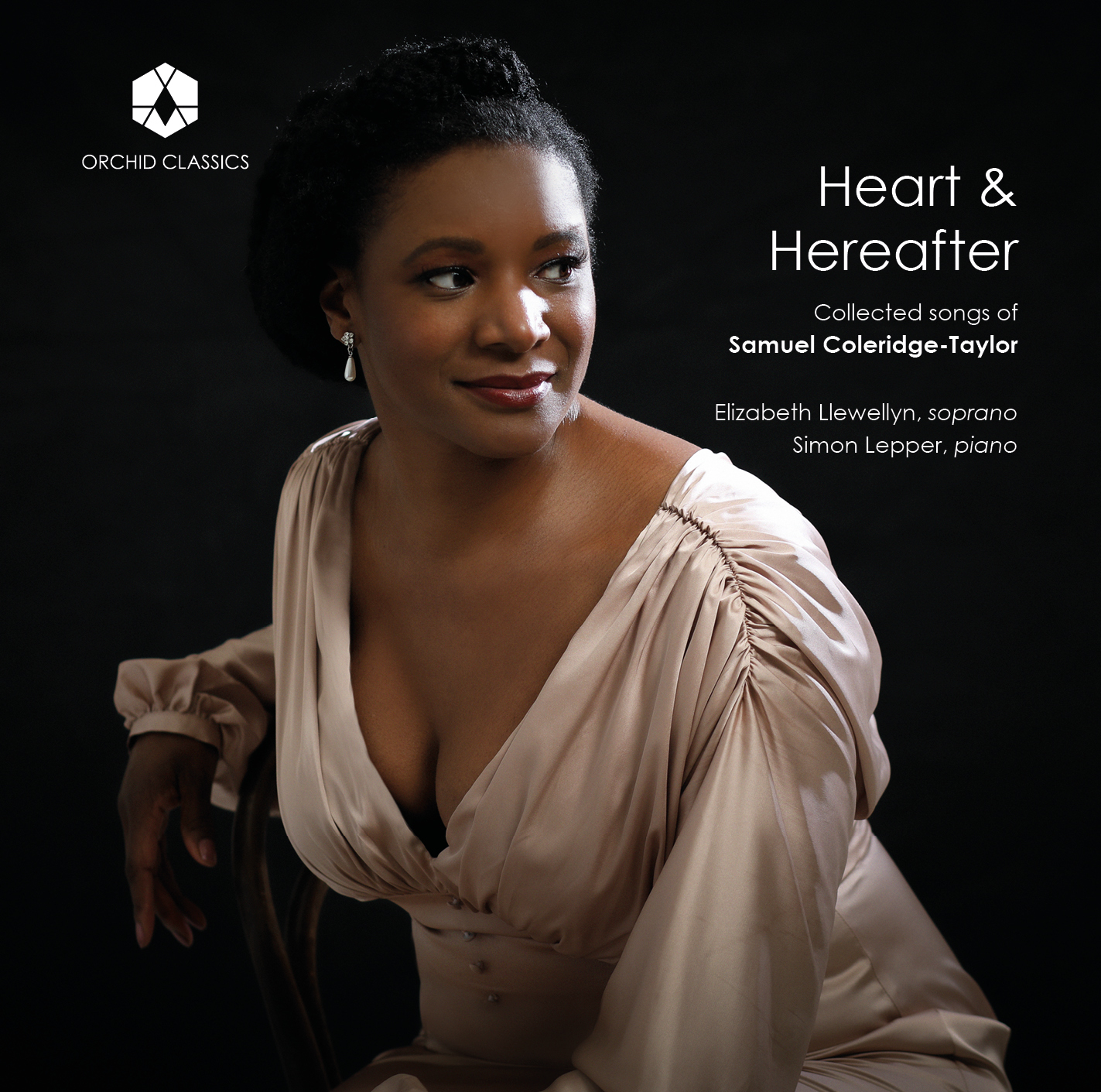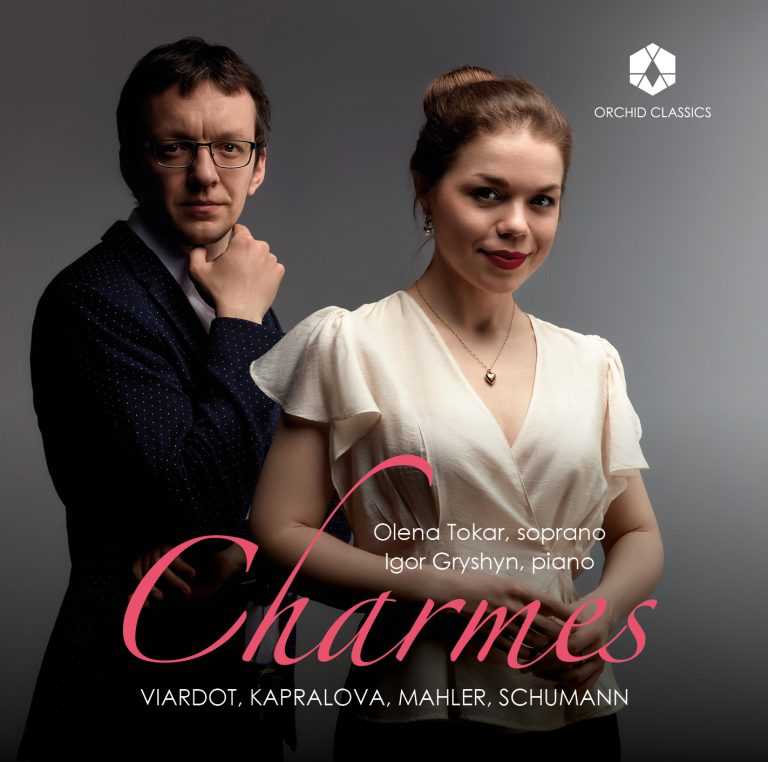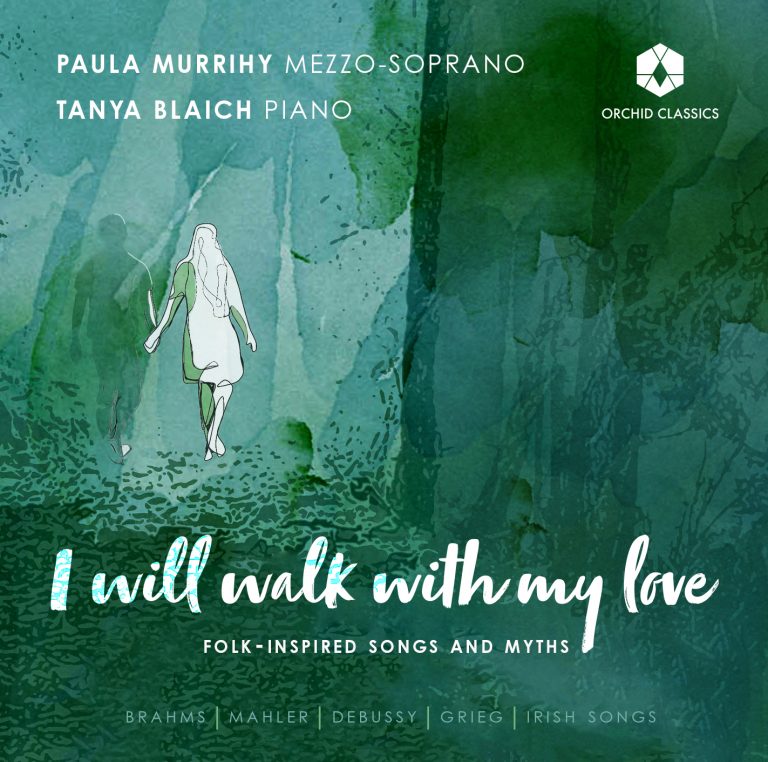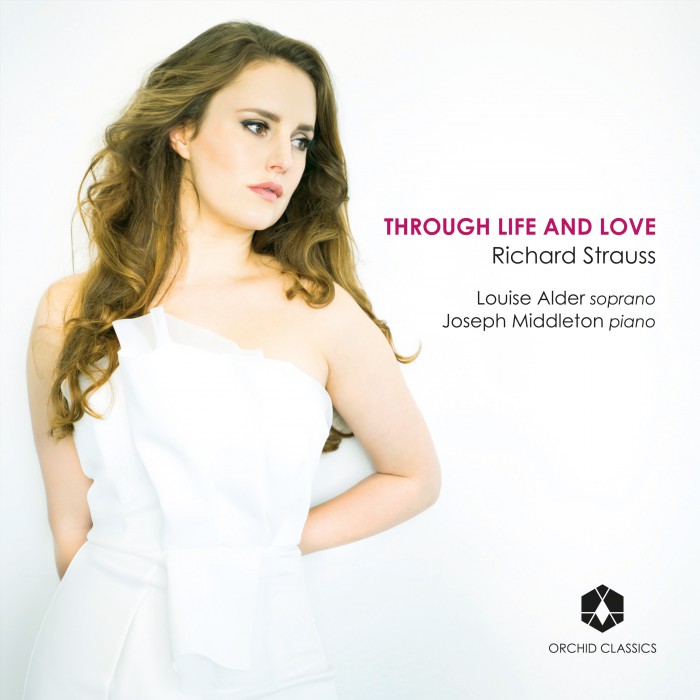Artist Led, Creatively Driven

Heart & Hereafter
Collected songs of Samuel Coleridge-Taylor
Elizabeth Llewellyn, soprano
Simon Lepper, piano
Release Date: 28th May
ORC100164
HEART & HEREAFTER
Samuel Coleridge-Taylor (1875-1912)
Six Sorrow Songs, Op.57
1. Oh, what comes over the sea
2. When I am dead, my dearest
3. Oh, roses for the flush of youth
4. She sat and sang alway
5. Unmindful of the roses
6. Too late for love!
from “Southern Love Songs”, Op.12
7. Minguillo
8. If thou art sleeping, maiden
9. Tears
African Romances, Op.17
10. An African love song
11. A prayer
12. A starry night
13. Dawn
14. Ballad
15. Over the hills
16. How shall I woo thee
from “Five Fairy Ballads”
17. Big Lady Moon
LITERARY FIGURES
from “Songs of Sun and Shade”
18. Thou art risen, my beloved
19. You lay so still in the sunshine
20. Thou hast bewitched me, beloved
21. A king there lived in Thule
(after Goethe’s Faust)
22. A Lament
from “Six Songs”, Op.37
23. Canoe Song
24. You’ll love me yet
25. Life and Death
Total time 55.34
Elizabeth Llewellyn, soprano
Simon Lepper, piano
I first met Samuel Coleridge-Taylor on a wet March day in 2012. I had asked Simon Lepper to coach me on a few Schubert songs for Radio 3’s “Spirit of Schubert” series. At the end of our session, Simon had asked me, “Have you come across this composer? These songs are lovely – we should have a bash through them sometime…”
Fast-forward to 2018, which found me undertaking some initial research into the life, times, and works of Coleridge-Taylor, specifically his songs. Where I had initially thought there were thirty or so songs, I had discovered that there are hundreds…and many of them very fine indeed. During a long ‘phone-call with Simon, it became clear that my idea of recording an album of quality, which showcased the best of Coleridge-Taylor’s songs, had “legs” …
And so began the journey which culminates here.
My research yielded some important information: that most of Coleridge-Taylor’s songs were out of print. I spent hours at the British Library, or on emails to the US. Recordings were patchy – the odd song would turn up on albums by such singers as Stuart Burrows or Felicity Palmer, or on very old recordings of recitals by Dorothy Maynor or Webster Booth; also, a few semi-professional recordings. I felt that the quality and breadth of Coleridge-Taylor’s song output deserved more careful curation and a much more passionate advocacy.
I am aware that this is a most unusual premise for a debut album! True, I could have recorded some Puccini or Verdi – these composers have loomed large in my career. But I felt passionately then as I do now that, if I was going to spend much time, energy, and money on an album, it was important to create something which had not existed before. There is certainly scope (and my hope!) to record to entire song output of this wonderful British composer.
Elizabeth Llewellyn
Six Sorrow Songs
Whilst researching and preparing these songs, I have often remarked at the sensitivity with which Coleridge-Taylor sets the poetry of female writers. Along with Elizabeth Barrett Browning (whose poetry is employed for his collections of songs entitled The Soul’s Expression), Christina Rossetti’s life was one of eventual hardship – familial poverty, ill-health, and bouts of depression. In this album, Rossetti features heavily, being the author of what became known as the composer’s Six Sorrow Songs, and A Lament which appears later in the track-list. The poetry for the Sorrow Songs comes from a variety of collections – “Goblin Market and other Poems” first published in 1862 and “New Poems”, first published in 1896. “One Sea-Side Grave” was the original incarnation of Unmindful of the roses. The highly idiosyncratic final song of this collection is a setting of the final, bride-song section of Rossetti’s epic poem “The Prince’s Progress”. Although Coleridge-Taylor chose to set only three of the six stanzas, it is clear that the subject was a “queen of hearts”, and the mourning depicted here is bittersweet:
“We never heard her speak in haste;
Her tones were sweet,
And modulated just so much
As it was meet:
Her heart sat silent through the noise
And concourse of the street.
There was no hurry in her hands,
No hurry in her feet;
There was no bliss drew nigh to her,
That she might run to greet.”
(from The Prince’s Progress by Christina Rossetti, 1866)
Southern Love Songs
Bound together in full black morocco, a published score of Southern Love Songs is inscribed in ink at the head of the titlepage: “To Miss Mamie Fraser / with all best wishes for the New Year / from S. Coleridge Taylor [sic] / Jan 1897”. Also included is the score of Coleridge-Taylor’s African Romances, inscribed to the same woman. Mamie Fraser was a fellow-student and evidently a close friend of Samuel Coleridge-Taylor at the Royal College of Music in 1897.
The collection of Southern Love Songs themselves are an intriguing glimpse into the Victorian obsession with “exoticism”. Made up chiefly of translations by J. G. Lockhart of ancient Spanish ballads, the collection also includes offerings by Henry Wadsworth Longfellow in If thou art sleeping, maiden, after a Portuguese source, and My Love, and even a “turn” by Byron in the form of the melancholic Oh! My lonely pillow. What is fascinating about the songs I have chosen here is the skill with which Coleridge-Taylor infuses them with Latin flavour – a lean and nimbly-played flamenco guitar in If thou art sleeping, and an infectious, flirtatious swish of a dancing-skirt in Minguillo – but something altogether more profound and delicately balanced in the face of abandonment in Tears.
African Romances
In his British Library feature entitled “Black Europeans”, Mike Phillips writes: “In 1896, the African-American poet and novelist Paul Laurence Dunbar (1872-1906) visited London. His meeting with Coleridge-Taylor began a series of collaborations between the two. In some ways the partnership was logical, given Coleridge-Taylor’s later interest in African America, and the ‘crossover’ reputation of Dunbar’s genial but shallow verse. On the other hand, Coleridge-Taylor’s frequent use of the label ‘African’ is deceptive. The songs Seven African Romances (1897) which opened the collaboration are light and tuneful, with hardly a dash of exoticism.”
Almost all of the poems here by Dunbar appear in his collected works Majors and Minors, first published in 1895. The penultimate song in Coleridge-Taylor’s collection appears in Dunbar’s Lyrics of the Hearthside some four years later, and is suggestive of the very gentle, domestic nature of these songs. Dawn and A starry night are strongly reminiscent of the Jamaican Anansi stories of my childhood. Notated between 1919 and 1921 in the remote country districts of Jamaica, the Anansi stories represented true folk art – an oral tradition of stories from Africa, about “the spider Anansi as the trickster hero of the Gold Coast”. Laced with riddles, they often had an element of both fun and the cautionary tale, but also assumed the task of explaining how much of the animal or natural world came to be – “Why Rocks at the River are covered with Moss” or “Why Hog is always grunting”.
Big Lady Moon
Kathleen Mary Easmon (1891-1924) was a talented cultural-dance performer, artist, musician, and intended missionary who was the first West African to earn a diploma from the Royal College of Arts. She was the niece of Adelaide Casle-Hayford – a pioneer of women’s education in Sierra Leone – and was a personal friend of Coleridge-Taylor, whose father was also Sierra Leonian. The Easmon family was among the wealthy and aristocratic Creole families, known locally as the “Aristos” and descended from one of the original black American founding-families which established Freetown in Sierra Leone in 1792.
Coleridge-Taylor’s charming setting of five of Easmon’s children’s poems in Five Fairy Ballads have more than a touch of the easy flow and familiarity of the musical-hall and were reputedly performed at the Royal Albert Hall in 1914.
The three Songs of Sun & Shade performed on this album – settings of poems by Marguerite Radclyffe-Hall (1880-1943) – are compelling when we know something of her life. An English poet and author born into a wealthy family, she is best known for the novel The Well of Loneliness. As a young woman of means following the death of her father, she began to do as she pleased, dressing in typical-men’s fashion of the times, and living openly as a lesbian. Having reached adulthood without a vocation, she spent much of her twenties pursuing women she eventually lost to marriage. Hall and her lovers were “…undeterred by the Church’s admonitions on same-sex relationships. Hall’s Catholicism sat beside a life-long attachment to spiritualism and reincarnation.”
The songs included here are incredibly intimate and sensual – You lay so still – or full of barely-repressed longing and Gothic passion – Thou art risen, my beloved. The final song of the three, Thou hast bewitched me, is breathless with delight and youthful exuberance.
Coleridge-Taylor wrote a great deal of incidental music for the stage (see his Othello Suite for orchestra, Op.79). Translated from Goethe’s Faust by playwrights Stephen Phillips and J. Comyns Carr, A king there lived in Thule was one of many songs which were performed on London’s stages. Dedicated to the leading West End star Marie Löhr, this was sung by her (as Marguerite) at His Majesty’s Theatre in Phillips and Carr’s version of Goethe’s Faust. The song is notable as it showcases Coleridge-Taylor’s powers of understatement; an elegant handling of the text without “overgilding the lily”, creating an atmosphere of mist and legend.
A Lament is another setting of poetry by Rossetti – “A dirge” (a poem also set to music by John Ireland). A deeply religious person, opposed to slavery, and the exploitation of women and girls in prostitution, Rossetti is perhaps most famous for writing the words of In the Bleak Midwinter set to music by Holst. This mourning for a lost child, however, strikes a note perhaps closer to that of her Sing-Song: A Nursery Rhyme Book, from which Ireland set poetry for his song-cycle Mother and Child. Here, Coleridge-Taylor’s sensitivity to the text is exquisite, along with his understanding of writing for the female voice.
Canoe Song
Malcolm’s Katie “…is a long, narrative poem in blank verse, dealing mainly with the love and trials of young Max and Katie in the 19th-century Canadian bush…and a collection of love-songs in different stanza forms.” It is one of these love-songs which Coleridge-Taylor chose to set to music. The writing for the piano is notable here in its delicacy and transparency, arguably more the central figure than the singer. Robin Mathews comments that “the canoe sits in the centre of the globe, implying perfection in the love of the protagonists”. The author was Isabella Valancy Crawford (1846-1887), an Irish-born Canadian writer and poet, one of the first of her countrymen to make a living as a freelance writer, and whose epic poem earned her “a central place in the canon of nineteenth-century Canadian poetry.” Her source for this poem was “O légère hirondelle” from Gounod’s opera Mirielle, but Robert Alan Burns comments that, in her version, “the canoe moves through an ambiguous and illusory medium to become a vehicle of communion, an image of containment whose destination is uncertain.”
You’ll love me yet!
The English poet and playwright Robert Browning (1812-1889) was known for the “irony, characterisation, dark humour, social commentary” of his poems; the words to this song are no exception – direct, confident, and with a half-wry smile. It is interesting, therefore, that Coleridge-Taylor chose the opposite route with his setting of the poem – uncertain, falling, sometimes hesitant phrases. However, one cannot deny that Browning’s own life – the meeting and wooing of Elizabeth Barrett, who was six years his senior, and lived as a semi-invalid with her domineering father who disapproved of marriage for any of his children – seems to be echoed here as the singer commits to playing a “long-game” in the pursuit of the object of his affections.
As the finisher for the album, remarkably little is known about the author of the lyrics for Life and Death. The name of Jessie Adelaide Middleton (1864-1933) is well-regarded amongst afficionados of supernatural literature, chiefly for her Ghost Book Trilogy. Coleridge-Taylor’s setting of the poetry almost comes straight out of the 1930s film-music playbook, with great sweeping lines and impassioned vocal leaps. Given that the composer died prematurely more than twenty years before this era in 1912, it begs the question what sort of music he might have written had he lived.
Elizabeth Llewellyn
Soprano
Known for her vivid portrayals and her full, distinctive voice, since making her debut as Mimi/La Boheme in 2010 at the English National Opera, Elizabeth has established herself internationally as a dramatic and vocal artist of distinction.
Specialising in the Italian repertoire, her roles have included Manon Lescaut, Madama Butterfly, Magda/La Rondine, Giorgetta/Il Tabarro, Tosca, Suor Angelica, Aida, Luisa Miller, and Amelia/Simon Boccanegra for which Elizabeth was nominated for “Singer of the Year 2013” in OpernWelt. In 2019, Elizabeth made her debut at the Metropolitan Opera, New York in the title role of Bess in Porgy and Bess.
Elizabeth also is a sought-after concert artist. Recent appearances have included debut recitals at London’s Wigmore Hall and Snape Maltings in Aldeburgh. Orchestral performances include Beethoven’s Missa Solemnis, Mahler’s Symphony No. 8, Verdi’s Requiem, Elgar’s Caractacus and Vaughan Williams’ A Sea Symphony with Martyn Brabbins (both recorded for Hyperion), and a live performance of Strauss’ Vier Letzte Lieder on BBC Radio 3 with the BBCSO and Donald Runnicles.
Future plans include a series of recitals at the Wigmore Hall, centred around the songs of Coleridge-Taylor, her French debut as Tosca with Opera Dijon, and her role debuts as three Verdi heroines: Desdemona/Otello, Alice Ford/Falstaff, and Leonora/Il Trovatore.
Simon Lepper
Piano
Simon read music at King’s College, Cambridge before studying collaborative piano with Michael Dussek at the Royal Academy of Music in London and later with Ruben Lifschitz at the Académie de Royaumont, France.
Specialising in song accompaniment, he has regularly collaborated with singers including Benjamin Appl, Ilker Arcayürek, Christiane Karg, Karen Cargill, Stéphane Degout, Angelika Kirchschlager, Sally Matthews and Mark Padmore. He performs extensively in venues around the world including Carnegie Hall, the Concertgebouw, the festivals of Verbier, Ravinia and Edinburgh, and the Opera houses of Frankfurt, Geneva, Bordeaux and La Monnaie. In his home country, he is often heard on BBC Radio 3 and regularly performs at the Wigmore Hall where he has also curated a series on the songs of Joseph Marx.
He is a committed teacher and is currently professor of collaborative piano and a vocal repertoire coach at the Royal College of Music, London where he also co-ordinates the collaborative piano course. Since 2003 he has been the official accompanist for the BBC Cardiff Singer of the World Competition.
His discography includes a live recital disc with Stéphane Degout and a disc of Ballades, Mahler songs and a French Song recital with Karen Cargill, 2 volumes of Debussy Songs and a Strauss disc with Gillian Keith, the complete songs of Jonathan Dove with Kitty Whately, Schubert Songs with Ilker Arcayürek and a recital disc with Dame Felicity Palmer.










